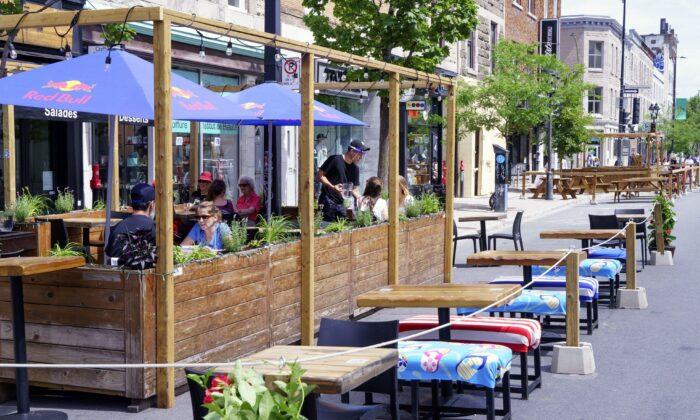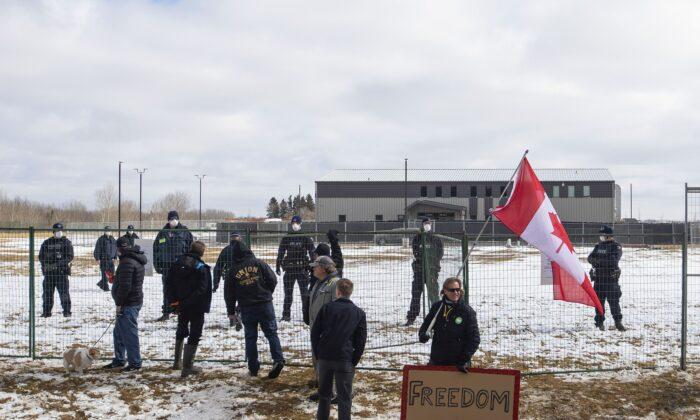The pandemic has been a train wreck for the foodservice industry, with many restaurants dying and others scrambling to survive.
Restaurants Canada vice-president James Rilett says 60 percent of reopened restaurants are still losing money. He has heard difficult stories from members.
“Some are heartbreaking, where people have put their life savings into a restaurant and now they’re wondering if it will disappear,” he says.
“I talked to one person in the downtown Toronto area that had a very, very good place that people loved to go to, and he just was closed for so long he just couldn’t make a go of it. He had to close up for good and stop the bleeding.”
Rilett says restaurants have faced added expenses ranging from $30,000 to $40,000 for “everything from new fresh food, to new PPE, to necessities, to retraining staff. All of those costs had to be borne when they reopened, plus the debt that they incurred while they were closed.”
Then there’s rent. Bob Collins, owner of Pizza Bob’s in Calgary, is glad he got a break.
“I have a landlord that right from the beginning of this dropped the rent in half, and he’s kept it that way. He knows what’s going on. We talk all the time. He just wants everybody to get through and succeed, right? So I’m very fortunate,” Collins says.
Collins says overall sales are down 55 percent despite a well-established delivery service. His dine-in business was unavailable for months; it is open now but still remains slow. Social distancing rules and restrictions on live entertainment continue to hurt.
“People don’t have the money that they had before so they’re not going out as much. They’ve got in the habit of staying at home and they’re ordering in because maybe they’re afraid to go be in public and with other people,” he says.
The federal government’s Canadian Emergency Wage Subsidy (CEWS) has been a lifeline for Collins and many other restaurant owners. CEWS pays 75 percent of employee wages if their employer’s revenues have dropped more than 30 percent.
“I’m able to use the wage subsidy which is huge because otherwise I wouldn’t he here, or I would be here 40 hours a week slugging it out. And at my age [of 68] … it would drive me to the brink of insanity to be here 40 hours a week like I was in the old days.”
When first announced, CEWS was only scheduled to last 24 weeks and would end once a restaurant’s revenue losses were less than 30 percent over the previous year. On July 10, Restaurants Canada called on the federal government to extend the subsidy until restrictions were over and gradually reduce benefits after the 30 percent threshold was surpassed instead of dropping them entirely.
On July 17, the federal government announced it would extend CEWS until Dec. 19 and provide “a gradually decreasing base subsidy,” as had been requested.
Real estate agent Jan Male opened the Iron Horse Saloon in Hamilton on March 2, only to be shut down two weeks later. Yet, she could not apply for CEWS.
“Because I’m a new business and I just opened in March I’m not eligible for anything. And I don’t believe that is fair because I don’t have a choice in this matter,” she told The Epoch Times.
Male says she can’t afford to fail because she used her house as collateral for the restaurant’s mortgage.
“It’s the toughest thing I’ve ever gone through and I’m 62,” she says.
“I’m paying my mortgage at home and my mortgage here and all of the utilities. The insurance is astronomical. Property taxes haven’t been paid because I can’t afford to but they’re coming after all of us. So even though they say ‘we’ll give you a break on hydro,’ they don’t to any business.”
It cost an extra $3,000 to prepare the patio, she says.
The pandemic created other hassles for Male, including interruptions to the supply chain.
“Trying to find the stock for all of your food—it’s impossible. They don’t have it anywhere, everyone is out of stock. Something as simple as our fish and chips on Fridays—I have to go all over to find fish. And wing sauce. I have a wing day on Wednesday, I can’t find the sauces anywhere so I’m making my own sauce.”
Adding to the problem is fewer customers. “I’d say 50 percent of the people have told me on telephone calls or emails or text messages they’re afraid to come out, especially in an environment that’s a restaurant,” Male says.
Her own biggest fear is that rising pandemic numbers in Ontario will lead to another shutdown.
“I’ve got support. It was very busy yesterday. It’s just—am I going to survive? I think I will but not if they shut us down again.”
According to Rilet, the industry “is going to feel the pinch for quite some time. We figure it’s going to take 12 to 18 months before most places can return to a profitable position,” he says.
“I think we’re going to see a lot of unfortunate situations, and we’re going to see a lot of closures, unfortunately,” he adds. “Most of the places that are closing down, they just can’t keep up with the rent.”





